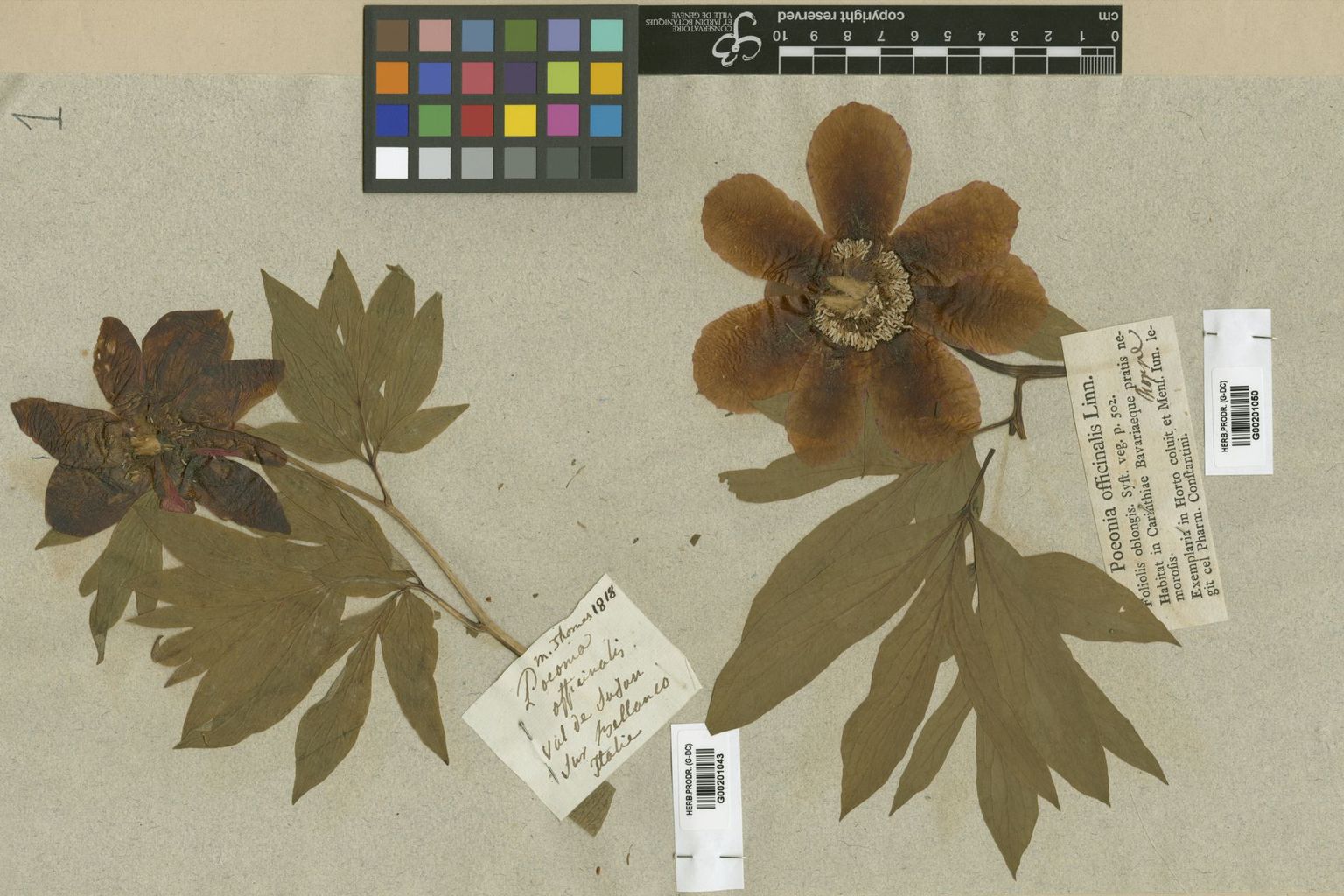International research infrastructures
BioCASe is the Biological Collection Access Service, a transnational network of primary biodiversity repositories. It links together specimen data from natural history collections, botanical/zoological gardens and research institutions worldwide with information from huge observation databases. The aim is to make the world's data on biodiversity data freely and universally accessible on the Internet through data portals and web services, a goal that BioCASe shares with related initiatives such as the GBIF and iDegBio. In the past years, BioCASe has developed into a widely accepted standard for data sharing and has laid the foundations for several thematically - both taxonomically and geographically - specialized networks. BioCASe is the CETAF node for GBIF (biocase.org).
BOLD SYSTEMS is a cloud-based data storage and analysis platform developed at the Centre for Biodiversity Genomics in Canada. It consists of four main modules, a data portal, an educational portal, a registry of BINs (putative species), and a data collection and analysis workbench.
The most complete authoritative list of the world's species - maintained by hundreds of global taxonomists
CETAF is the Consortium of European Taxonomic Facilities, a European network of Natural Science Museums, Natural History Museums, Botanical Gardens and Biodiversity Research Centers with their associated biological collections and research expertise. The 33 members that represent 59 institutions from 21 European countries and associates states are estimated to hold 68% of the worlds described biodiversity as specimens. The consortium contributes to Europe’s knowledge-base by enhancing the synergies of the members collections and their research capabilities. They explore and document the natural world focusing on studying the species and their evolutionary history, advancing research in a multitude of disciplines (cetaf.org).
DiSSCo is the Distributed System of Scientific Collections, a new pan-European Research Infrastructure initiative of 21 European countries that developed under CETAF, with a vision to position European natural science collections at the centre of data-driven scientific excellence and innovation in environmental research, climate change, food security, one health and the bioeconomy. The mission is to mobilise, unify and deliver bio- and geo-diversity information at the scale, form and precision required by scientific communities; transforming a fragmented landscape into a coherent and responsive research infrastructure. Effectively transforming disperse and fragmented access nodes to an integrated data-driven European research infrastructure to provide open access to mass, linked, reliable and precise data for the natural world (dissco.eu).
GBIF is the Global Biodiversity Information Facility, an open-data research infrastructure funded by the world’s governments and aimed at providing anyone, anywhere access to data about all types of life on Earth. Coordinated through its Secretariat in Copenhagen, the GBIF network of participating countries and organizations, working through participant nodes, provides data-holding institutions around the world with common standards and open-source tools that enable them to share information about where and when species have been recorded. This knowledge derives from many sources, including everything from museum specimens collected in the 18th and 19th century to geotagged smartphone photos shared by amateur naturalists in recent days and weeks (gbif.org). Link: https://www.gbif.org/.
GeoCASe is the Geosciences Collection Access Service. Making geosciences collection data openly and universally available to foster scientific research development internationally and to support the public use of these data are the goals and principles of GeoCASe (geocase.eu).
GGBN is the Global Genome Biodiversity Network, an international network of institutions that share an interest in long-term preservation of genomic samples representing the diversity of non-human life on Earth. This organisation provides a platform for biodiversity biobanks from across the world to develop DNA quality and tissue collection standards, improve best practices, and harmonize exchange and use of material in accordance with national and international legislation.
ICEDIG is an EU-funded project that has been developed to support the new pan-European Research Infrastructure initiative, DiSSCo, in addressing the complex challenges that are still at play to digitise these collections via the ICEDIG design study. With the mission to drive ‘Innovation and consolidation for large scale digitisation of natural heritage’, this Horizon 2020 project is inviting stakeholders and representatives from potential industrial partners, national and European political bodies, the research community and society, to discuss the features of the project in relation to prospects for mass digitisation of natural sciences collections.
iDigBio is the Integrated Digitized Biocollections, the national resource for advancing digitization of biodiversity collections in the USA, financed by their National Science Foundation. Data and images for millions of biological specimens are being made available in electronic format for the research community, government agencies, students, educators, and the general public (idigbio.org).
Info Species is the Swiss Centre for Species Information. It comprises all the different national species-based databases (vascular plants, bryophytes, fungi, lichens and fauna) and aims to promote the collaboration between the different registration centres, the cantons, the confederation and third parties such as public or private persons or bodies that engage in species conservation.
LifeWatch-ERIC is the e-Science European Infrastructure for Biodiversity and Ecosystem Research, officially established as international organism by the European Commission in 2017. In general terms, LifeWatch aims to address new research fields, test innovative hypothesis, deepen scientific knowledge and above all, to provide solutions for environmental policy and management issues.
MOBILISE is a Cost Action (Mobilising Data, Policies & Experts in Scientific Collections) that aims to foster a cooperative network in Europe to support excellent research activities, and facilitate knowledge and technology transfer around natural science collections. This will prepare the ground for a future pan-European Distributed System of Scientific Collections (DiSSCo).
mus[nat]coll.ch is the Swiss association of Museums that represents museums within Switzerland and aims to increase the visibility of Museums as well as conveying the importance of natural science collections and natural history museums as part of our national and international heritage.
Nationalen Bodeninformationssystem (NABODAT), affiliated with the National Soil Monitoring Network NABO, is the National Soil Information System that is continuously updated with cantonal and national soil data. Access to this application is provided for the clients of the federal government and cantons included in the NABODAT network. As mandated by the Federal Office for the Environment FOEN, the service centre is responsible for the smooth operation of the soil information system and supports users in the processing, importing and management of data. Moreover, the service centre organises, specifies and tests the advancement of the application in collaboration with the NABODAT working group and the external IT developer.
NCBI is the National Center for Biotechnology Information of the USA. It has been charged with creating automated systems for storing and analysing knowledge about molecular biology, biochemistry, and genetics; facilitating the use of such databases and software by the research and medical community; coordinating efforts to gather biotechnology information both nationally and internationally; and performing research into advanced methods of computer-based information processing for analysing the structure and function of biologically important molecules (ncbi.nlm.nih.gov). Link: https://www.ncbi.nlm.nih.gov/genbank/NCBI is the National Center for Biotechnology Information of the USA. It has been charged with creating automated systems for storing and analysing knowledge about molecular biology, biochemistry, and genetics; facilitating the use of such databases and software by the research and medical community; coordinating efforts to gather biotechnology information both nationally and internationally; and performing research into advanced methods of computer-based information processing for analysing the structure and function of biologically important molecules (ncbi.nlm.nih.gov).
ReColNat in a French initiative that aims to be the tool that will virtually unite all the actors that, together, are capable of providing access to the information contained in their collections. This is achieved by the creation of an image bank and collaborative tools for its exploitation, which the entire community of systematicians, professionals and amateurs has access to.
SPNHC is The Society for the Preservation of Natural History Collections, an international society whose mission is to improve the preservation, conservation and management of natural history collections to ensure their continuing value to society.
SSS is the Swiss Systematics Society, under the auspices of the Swiss Systematic Society (SSS), unites systematic biologists from different fields who are investing in promoting the interests of systematics and taxonomy. The SSS serves as a competent interlocutor for science and society, and maintains international exchanges.
SwissBOL is an Association that acts as the centre for coordination of the activities related to the DNA barcodes in Switzerland. The SwissBOL network was founded with the goal of using DNA barcoding to capture the diversity of life in Switzerland and to use this information to monitor national biodiversity as well as enhance conservation strategies.
SYNTHESYS is an EU-funded project that aims to create an integrated European infrastructure for researchers in the natural sciences and a shared, high quality approach to the management, preservation, and access to leading European natural history collections. SYNTHESYS is split into three activities: Access, Networking and Joint Research Activities that facilitates access to specimens, research that is conducted on specimens and European collaborations between the partner institutions.
TDWG is the Biodiversity Information Standards group that focuses on the development of standards for the exchange of biological/biodiversity data, such as for for biodiversity occurrence data (Darwin Core and ABCD).


